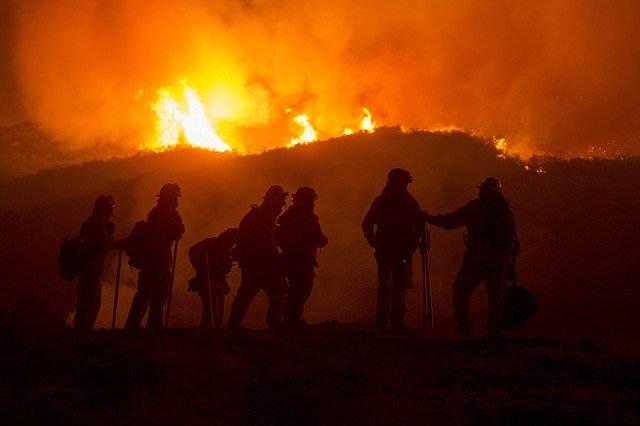Texas wildfires: 500+ structures destroyed. $356m residential exposure. Utility sued

Wildfires continue to burn across Texas, the largest of which has burned over one million acres alone and is only 15% contained, while officials said at the weekend that more than 500 structures have been destroyed and re/insurers will already be looking at the potential to subrogate claims in future, as an electrical utility has been sued over starting the largest fire.
The Smokehouse Creek fire continues to grow in Texas and is also burning in Oklahoma after merging with another blaze. It’s just 15% contained though and having burned more than one million acres already, looks set for further expansion as fire weather has continued to be challenging for fire fighters.
The damage reported so far, in being more than 500 structures destroyed, all comes from the Smokehouse Creek Fire, now the largest blaze in Texas history.
The actual figure for structures destroyed remains uncertain and is likely to be far higher, but many of them will be agricultural structures rather than homes, it appears from reports so far.
Risk modeller and analytics specialist CoreLogic said that it estimates there are around 1,544 single-family residential properties, with a combined reconstruction value of $356 million, located within the wildfire perimeter, as of late Friday.
CoreLogic said that, “At this time, extent of damage is unknown, and this estimate only defines the properties at risk within the fire perimeter,” but also noted that “Climate change, contributing to a rise in hot and dry days throughout the year, is increasing the threat of wildfires in Texas, leading to a rise in premiums for Texas homeowners.”
As we reported on Friday, insurance and reinsurance broker Aon said that the wildfires in Texas could cause economic and insured losses in the hundreds of millions of dollars.
Texas A&M Forest Service said it responded to four new requests for assistance on wildfires in Texas yesterday and noted that weather conditions remain challenging.
“The fire environment will trend warmer, drier, and windier across the Texas High Plains and northern Rolling Plains through Sunday ahead of a cold front passage Monday. As fuel moisture decreases, expect moderate initial attack fire potential Saturday in the High Plains and upper Rolling Plains where fire danger is forecast as very high,” the authorities said at 4pm local Texas time on Sunday March 3rd.
Adding that, “Today’s fire environment will support high potential for initial attack fires in the High Plains with moderate potential for large fires that have high resistance to control in dry, above normal grass loading for the southeastern High Plains when subjected to well above normal temperatures and critical wind speeds. A large fire will be possible in the western portion of the Canadian River drainage northwest of Amarillo where above normal grass loading is present.”
Finally, as we also noted on Friday, electrical utility equipment is being blamed for starting at least some of these wildfires, including the largest and most damaging Smokehouse Creek Fire.
Over the weekend a lawsuit was filed against Xcel Energy by a Texas homeowner who said the fire northeast of Amarillo was started by a broken power pole owned by the company that fell and ignited the blaze.
The lawsuit claims the power pole was damaged before it fell and then the fire was started, on which lawyer Mikal Watts said, “Xcel will pay for every dollar that its wildfire has caused.”
A company that inspected Xcel Energy’s power lines, Osmose Utilities Services, is also named as a defendant in the lawsuit.
As we explained on Friday, the fact electrical transmission equipment is seen as a cause of these wildfire will bring back memories of recent California fire seasons for the insurance and reinsurance market, where electrical utilities were deemed responsible for fires as their equipment caused them to ignite, resulting in significant subrogation recoveries for the insurance and reinsurance market.
It’s too early to suggest any subrogation claims will ensue in Texas, but it is worth keeping an eye on now legal action has ensued.
As we also explained on Friday, there are a number of US multi-peril catastrophe bond transactions that feature wildfire as one of their covered perils and so have exposure in the state of Texas.
These are largely sponsored by big national carriers, such as USAA, Allstate, Nationwide, Farmers, AmFam, and Progressive, while there is also one of Fidelis’ retro cat bonds that has US wildfire included.
But, as we explained, much greater clarity on the damage caused and potential for insured losses, is needed before any insurance-linked securities (ILS) market exposure could be identified and confirmed.






